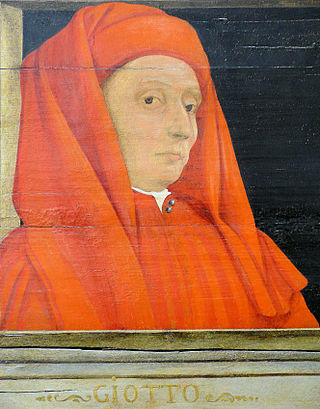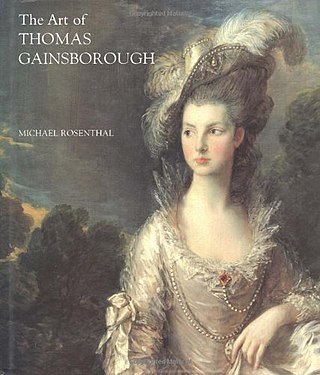Related Research Articles

The Courtauld Gallery is an art museum in Somerset House, on the Strand in central London. It houses the collection of The Samuel Courtauld Trust and operates as an integral part of The Courtauld Institute of Art.
Cyril Alexander Mango was a British scholar of the history, art, and architecture of the Byzantine Empire. He is celebrated as one of the leading Byzantinists of the 20th century.

Ernst KitzingerFBA was a German-American historian of late antique, early medieval, and Byzantine art.

David Talbot Rice was an English archaeologist and art historian. He has been described variously as a "gentleman academic" and an "amateur" art historian, though such remarks are not borne out by his many achievements and a lasting legacy of scholarship in his field of study.

Pittura infamante is a genre of defamatory painting and relief, common in Renaissance Italy in city-states in the north and center of the Italian Peninsula during the Trecento, Quattrocento, and Cinquecento. Popular subjects of pittura infamante include traitors, thieves, and those guilty of bankruptcy or public fraud, often in cases where no legal remedy was available. Commissioned by governments of city-states and displayed in public centers, pittura infamante were both a form of "municipal justice" and a medium for internal political struggles.
According to Samuel Edgerton, the genre began to decline precisely when it came to be regarded as a form of art rather than effigy; the power of the genre derived from a feudal-based code of honor, where shame was one of the most significant social punishments. As such, pittura infamante has its roots in the doctrines of fama and infamia in ancient Roman law.
John Kinder Gowran Shearman was an English art historian who also taught in America. He was a specialist in Italian Renaissance painting, described by his colleague James S. Ackerman as "the leading scholar of Italian Renaissance painting", who published several influential works, but whose expected major book on Quattrocento painting, for the Penguin/Yale History of Art series, never appeared. However, what is widely acknowledged as his most influential book, on the concept of Mannerism, published in 1967, is still in print.

The Stefaneschi Altarpiece is a triptych by the Italian painter Giotto, from c. 1320. It was commissioned by Cardinal Giacomo Gaetani Stefaneschi to serve as an altarpiece for one of the altars of Old St. Peter's Basilica in Rome. It is now at the Pinacoteca Vaticana, in Rome.

Giotto di Bondone, known mononymously as Giotto and Latinised as Giottus, was an Italian painter and architect from Florence during the Late Middle Ages. He worked during the Gothic and Proto-Renaissance period. Giotto's contemporary, the banker and chronicler Giovanni Villani, wrote that Giotto was "the most sovereign master of painting in his time, who drew all his figures and their postures according to nature" and of his publicly recognized "talent and excellence". Giorgio Vasari described Giotto as making a decisive break from the prevalent Byzantine style and as initiating "the great art of painting as we know it today, introducing the technique of drawing accurately from life, which had been neglected for more than two hundred years".

Robin Sinclair Cormack, FSA is a British classicist and art historian, specialising in Byzantine art. He was Professor in the History of Art, Courtauld Institute of Art, University of London, 1991–2004.

The Artistic Patronage of the Neapolitan Angevin dynasty includes the creation of sculpture, architecture and paintings during the reigns of Charles I, Charles II and Robert of Anjou in the south of Italy.
Peter John Murray was a British art historian and the Professor of History of Art at Birkbeck College, London from 1967 to 1980. Together with his wife, Linda Murray, he wrote primers on Italian Renaissance art which have been used by generations of students. In 1959 they published the highly successful Penguin Dictionary of Art and Artists, which was frequently updated and reissued. In 1963, they published two substantial introductory texts The Art of the Renaissance, and a book that became a classic primer The Architecture of the Renaissance.

Michael J. Rosenthal is emeritus professor of the history of art at the University of Warwick. He is a specialist both in British art and culture of the eighteenth and early nineteenth centuries, and the arts of early colonial Australia.

Anthony Applemore Mornington Bryer was a British historian of the Byzantine Empire who founded the journal Byzantine and Modern Greek Studies and the Centre for Byzantine, Ottoman and Modern Greek Studies at the University of Birmingham.
Howard Burns is a British architectural historian who is professor emeritus of architectural history at the Scuola Normale Superiore, Pisa. He has also lectured at the Courtauld Institute of Art and was Slade Professor of Fine Art at the University of Cambridge 1977-78. He is a specialist in the architecture of Andrea Palladio and is a member of the Accademia Olimpica and the Accademia di San Luca.

Sussan Babaie is an Iranian-born art historian and curator. She is best known for her work on Persian art and Islamic art of the early modern period. She has written extensively on the art and architecture of the Safavid dynasty. Her research takes a multidisciplinary approach and explores topics such as urbanism, empire studies, transcultural visuality and notions of exoticism. In her work as a curator, Babaie has worked on exhibitions at the Sackler Museum of Harvard University (2010), the University of Michigan Museum of Art, and the Smith College Museum of Art (1998).
Henry P. Maguire was born in Bath, England in 1943. He is an art historian, specialising in Byzantine art, and Professor Emeritus at Johns Hopkins Krieger School of Arts and Sciences in the History of Art Department. Between 1991-1996, he was Director of Byzantine Studies at Dumbarton Oaks, a research institute of Harvard University.
Annabel Jane Wharton is an American art historian with wide-ranging interests from Late Ancient & Byzantine art and culture through to modern architecture and its effect on ancient landscapes. She is currently William B. Hamilton Distinguished Professor of Art History at Duke University, North Carolina and has been working on a project regarding the use of new technologies for visualising historical materials.
David Crampton Winfield MBE was a British conservator and Byzantinist who specialised in wall paintings. The first part of his career was spent abroad, mainly in Turkey and Cyprus, and he was awarded an MBE in 1974 for his conservation work in Cyprus. In his obituary in The Times, David Winfield was described as “an investigative archaeological explorer cast in the mould of the great 19th-century scholar-travellers”.
Anne Elizabeth Dunlop is a Canadian-born art historian. As of 2022 she is Herald Chair of Fine Art at the University of Melbourne.
Alessandro Ferruccio Nova is an Italian art historian who specialises in the Renaissance. He is Director Emeritus of the Art History Institute of Florence (KHI) – the Max-Plank-Institute and Honorary Professor of Goethe University Frankfurt.
References
- 1 2 3 "Professor Julian Gardner - History of Art - University of Warwick". warwick.ac.uk. Retrieved 21 January 2021.
- 1 2 3 4 admin (21 February 2018). "Gardner, Julian". "Introduction." in, Bourdua, Louise, and Gibbs, Robert, eds. A Wider Trecento: Studies in 13th- and 14th-century European Art Presented to Julian Gardner. Leiden/Boston: Brill, 2012. Retrieved 21 January 2021.
- ↑ "Julian Gardner : Interview Track 3". wdc.contentdm.oclc.org. Retrieved 21 January 2021.
- 1 2 3 4 5 jessicas. "Visiting Scholar Interview: Julian Gardner". Dumbarton Oaks. Retrieved 21 January 2021.
- 1 2 Bourdua, Louise; Gibbs, Robert (9 December 2011). A Wider Trecento: Studies in 13th- and 14th-Century European Art Presented to Julian Gardner. BRILL. pp. Serena Romano p.xiv. ISBN 978-90-04-21076-9.
- 1 2 "Julian Gardner: Da altare d'oro a pala d'altare: Paolo Veneziano e la Pala d'Oro". Kunsthistorisches Institut in lorenz – Max-Planck-Institut. Retrieved 21 January 2021.
- ↑ "Ernst Kitzinger". The Independent. 20 January 2014. Retrieved 21 January 2021.
- ↑ "Professor John Shearman". The Independent. 4 October 2013. Retrieved 21 January 2021.
- ↑ "KUNSTFORM: Julian Gardner: The Roman Crucible. The Artistic Patronage of the Papacy 1198-1304, München: Hirmer 2013, 516 S., ISBN 978-3-7774-2385-2". www.arthistoricum.net. Retrieved 21 January 2021.
- ↑ "Prof Julian Gardner". Society of Antiquaries of London. Retrieved 21 January 2021.
- ↑ "Warwick Farewell - Professor Julian Gardner". warwick.ac.uk. Retrieved 21 January 2021.
- ↑ "Julian Gardner". press.uchicago.edu. Retrieved 21 January 2021.
- ↑ "Giotto and His Publics — Julian Gardner". www.hup.harvard.edu. Retrieved 21 January 2021.
- ↑ "Julian Gardner, 2011–2012". www.nga.gov. Retrieved 21 January 2021.
- ↑ Yumpu.com. "AAH Executive Committee Chairs, Executive Committee Members ..." yumpu.com. Retrieved 21 January 2021.
- ↑ "Giotto's Circle". The Courtauld Institute of Art. Retrieved 21 January 2021.
- ↑ "Who made the Conway Library?". Digital Media. 30 June 2020. Archived from the original on 3 July 2020. Retrieved 21 January 2021.
- ↑ "Christa Gardner". warwick.ac.uk. Retrieved 21 January 2021.